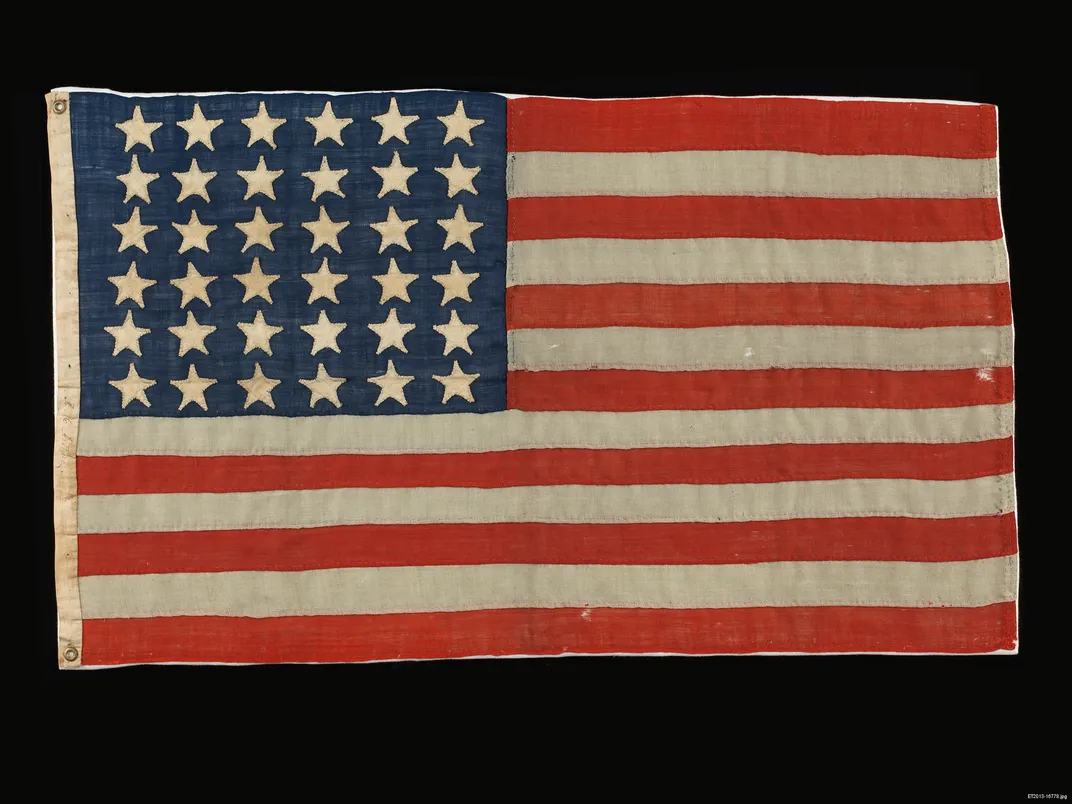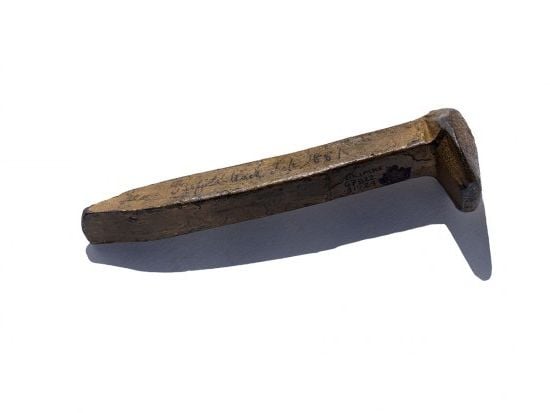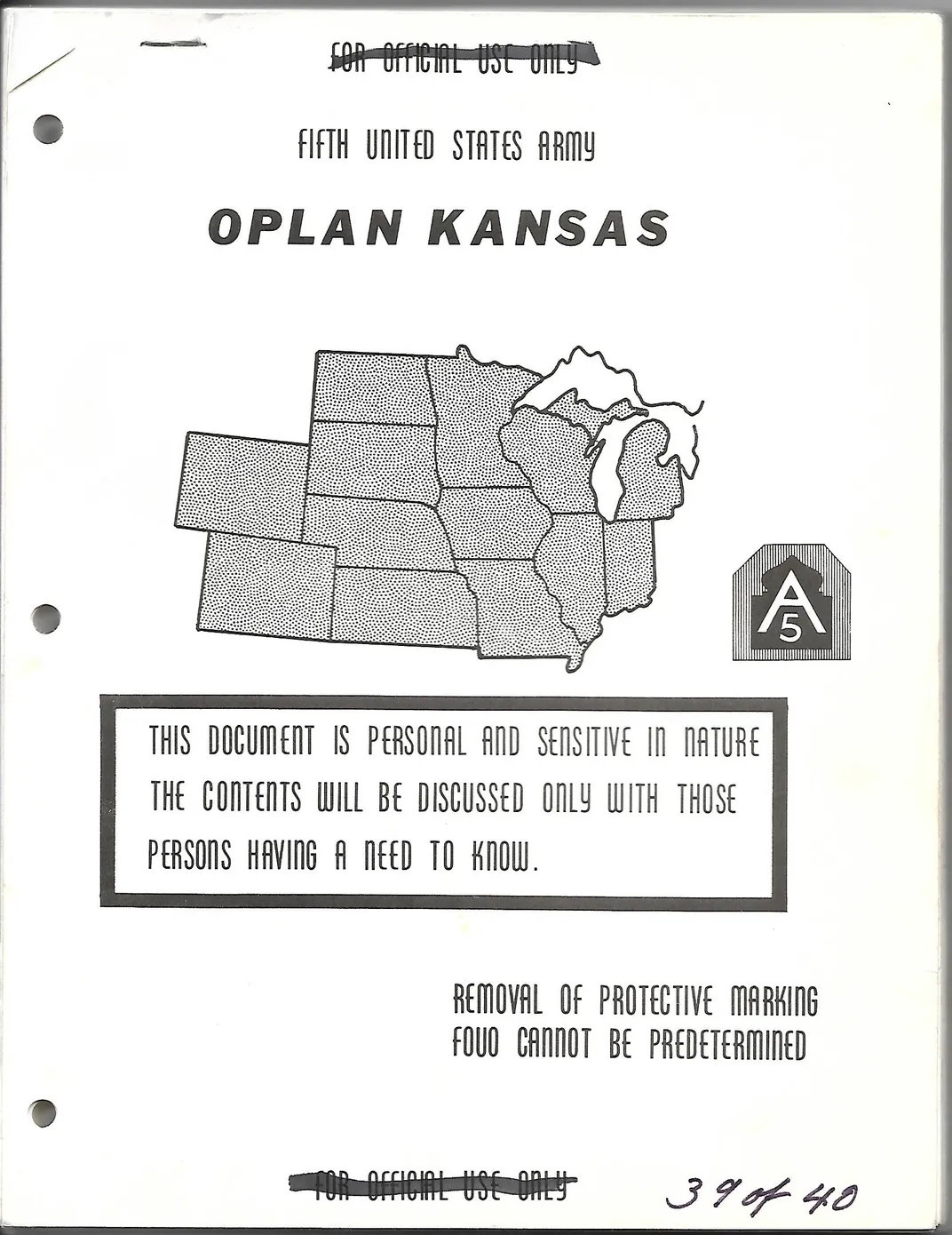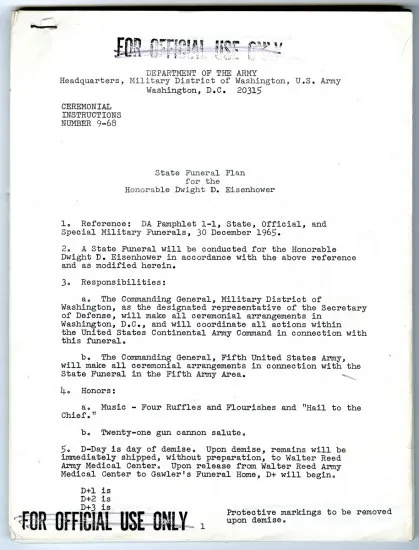The Somber History of the Presidential Funeral Train
This grand tradition has allowed Americans across the country to pay their respects to the chief executive
/https://tf-cmsv2-smithsonianmag-media.s3.amazonaws.com/filer/d0/c3/d0c3efee-c1cf-448c-bce8-0ee7406669f3/ap_18212591716486.jpg)
On Thursday, December 6, 2018, a locomotive painted in the colors of Air Force One and numbered 4141 will depart from Spring, Texas, carrying the remains of the 41st President George Herbert Walker Bush to his final resting place in College Station, 70 miles away. With this final journey, the Bush family reinstates a tradition that has not been seen since the funeral of Dwight Eisenhower almost 50 years ago. Union Pacific train number 4141 dates to October 18, 2005, when the locomotive was unveiled during a ceremony at the George H. W. Bush Presidential Library and Museum on the Texas A&M University campus. Those that come out to line the route of Bush’s funeral train will not just be paying their respects to the nation’s 41st president, they will be practicing a time-honored democratic tradition of honoring public service.
In the era before airplanes and interstate highways, the train was a practical part of the burial proceedings, conveying a casket from one place to another. Following the deaths of presidents, like Abraham Lincoln, Ulysses S Grant, James Garfield, William McKinley, Franklin Delano Roosevelt and Eisenhower, the funeral train’s journey from town to town also proved to be a visual emblem of sorrow and mourning, and a heartfelt way for the American people to honor the office of the president and its legacy.
American presidents remain in public service long after their tenure in office ends. As public servants and elder statesmen, they continue to receive a salary and benefits, contributing to American life in official and unofficial capacities. And as a country, they belong to us. Long after the dust of their campaigns and the political discord of their administrations has settled, their distinguished service becomes their legacy, perhaps even more so in death than in life. We show up en masse to remember them as they lie in state, and the funeral train extends the condolence period to any who can make their way to line the tracks. It is one last final way for the president to reach as many people as possible.
In April 1865, the assassination of Abraham Lincoln ignited an outpouring of grief across the country. The level of access the public had to directly mourn at the president’s casket was unprecedented. After lying in state in Washington, D.C. for six days, Lincoln’s body was placed on a locomotive to make the journey to its final resting place in Springfield, Illinois via an elaborate funeral train. The train, decorated in mourning bunting and with a large portrait of Lincoln on the front, carried the remains of both the president and his son Willie, who had died three years earlier and had been originally interred in Washington, D.C. It traveled more than 1,600 miles over 13 days, stopping in 180 cities, across seven states, roughly following the route Lincoln had taken to Washington as president-elect in 1861.

In major cities, the casket was unloaded from the train and opened for viewing, usually accompanied by elaborate public ceremonies. Lincoln was laid in state in locations that included Independence Hall, the New York City Hall, and in a specially built structure in the Public Square in downtown Cleveland, Ohio. Hundreds of thousands of people viewed the train from alongside the tracks or waited hours to glimpse the fallen leader’s face.
The oft-recounted quote supposedly uttered by Edwin M. Stanton after Lincoln’s death, “Now he belongs to the ages,” certainly rang true as his funeral train traveled the tracks. One of the train’s engineers, P. M. Arthur, kept as a souvenir a flag that was flown over the engine of Lincoln’s funeral train on the leg between Albany and Utica, New York. Arthur originally offered the memorial to Lincoln’s son, Robert Todd Lincoln, who suggested that it instead be sent to the Smithsonian Institution along with other Lincoln relics, to belong to the American people.
When James Garfield was shot in 1881, the gravely injured president was transported to Franklyn Cottage at the New Jersey seaside by train in a car that was refit for the comfort of the wounded Garfield, complete with a water-filled rubber mattress designed by the Navy Corps of Engineers to minimize painful jostling. Workers were brought in to build a special railway spur from the nearby town of Elberon, where the tracks originally stopped, directly to the door step of Franklyn Cottage. Not only did the townspeople help the railroad workers build the mile-long spur, but they were able to do it in 24 hours. Furthermore, there was an incline just before the cottage, so the railroad workers literally pushed the train to the cottage door.
When the President died two weeks later the same train retraced the path back to Washington, D.C. The spur was torn up and many who stood by the tracks to witness the solemn train pass kept a railroad spike as a souvenir of the event. Several of these spikes are now in the collections of the Smithsonian’s National Museum of American History. One donor reported that she was from a place near the town of Elberon, where the spur began. “Every man, woman and child helped,” to build the spur, she reported, “eager to be of some assistance.”

After lying in state in Washington, Garfield’s remains were carried by train to his final resting place in Cleveland, Ohio. Though the train did not make official stops for mourning, an 1881 account of the journey noted that the track was “lined with people all the way from Washington—flowers strewed on the tracks.”
On March 31, 1969, after the pomp and circumstance of a military funeral, a train carrying the body of Dwight D. Eisenhower, the 34th President of the United States, departed Union Station in Washington, D.C. at 6:40 pm. The Eisenhower funeral train passed through seven states during its journey to Abilene, Kansas, which Eisenhower called home.
Despite the Eisenhower family asking the governors of each state to facilitate the train’s movement by requesting the adjustment of other train movements and not publicly announcing when the funeral train would be passing through, citizens managed to determine when the train would be coming to their town and gathered along the tracks to pay their respects to the former president. The funeral train did make a few scheduled stops, including one in Cincinnati where Mrs. Eisenhower ordered the car with Eisenhower’s casket draped in black bunting and flags. Contradicting her original request that spectators not gather along the train route, Mrs. Eisenhower acquiesced, seeming to understand the deep need of the country’s citizens to pay their respects.
On Thursday, as the train carrying President Bush follows in the tradition of Lincoln, Garfield, Eisenhower along the published 70-mile route, mourners can gather along the way to witness the president's journey to his gravesite at the George Bush Presidential Library. The train will be equipped with a special glass viewing car for the express purpose of allowing the public one more glimpse of the head of state.


/https://tf-cmsv2-smithsonianmag-media.s3.amazonaws.com/accounts/headshot/Bemis_Bethanee_2.jpg)
/https://tf-cmsv2-smithsonianmag-media.s3.amazonaws.com/accounts/headshot/20181205_075726.jpg)